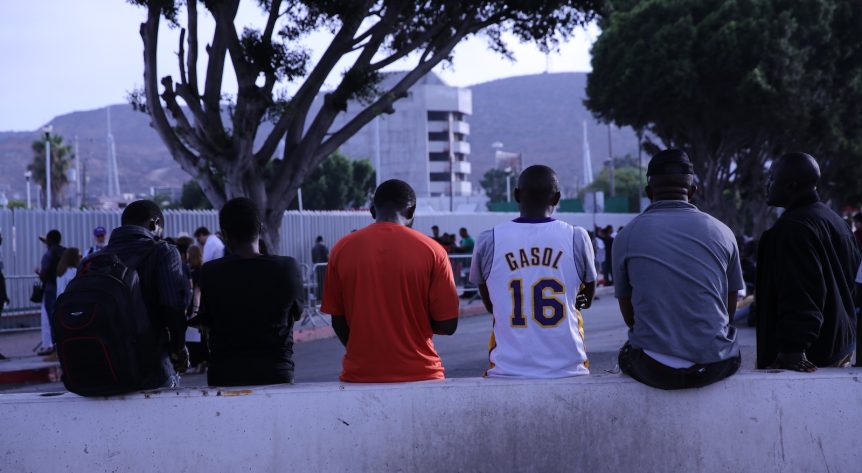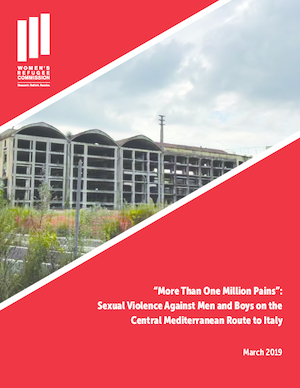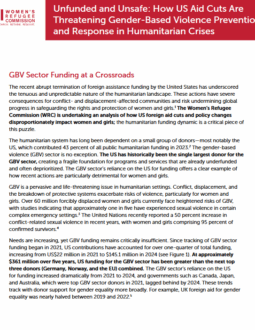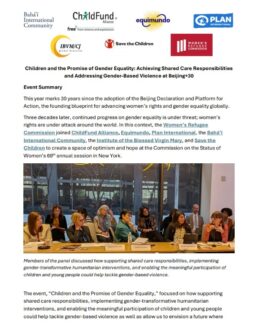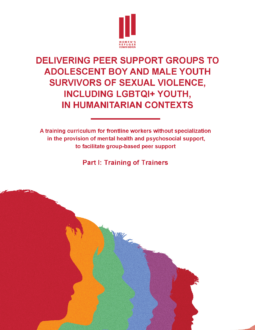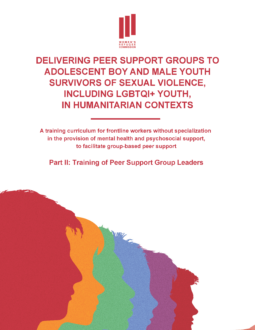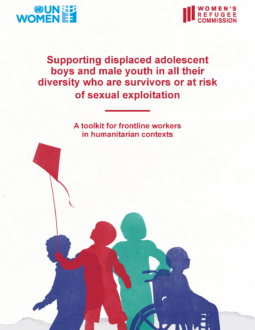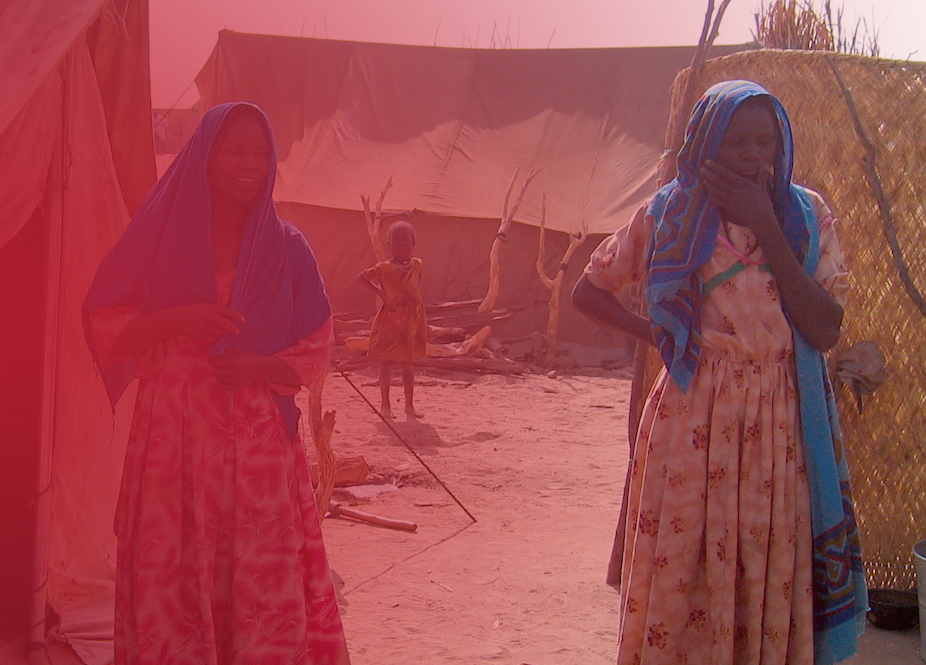Our Latest Tools
Supporting Displaced Adolescent Boys and Male Youth in All Their Diversity Who Are Survivors Or At Risk of Sexual Exploitation: A Toolkit for Frontline Workers in Humanitarian Contexts
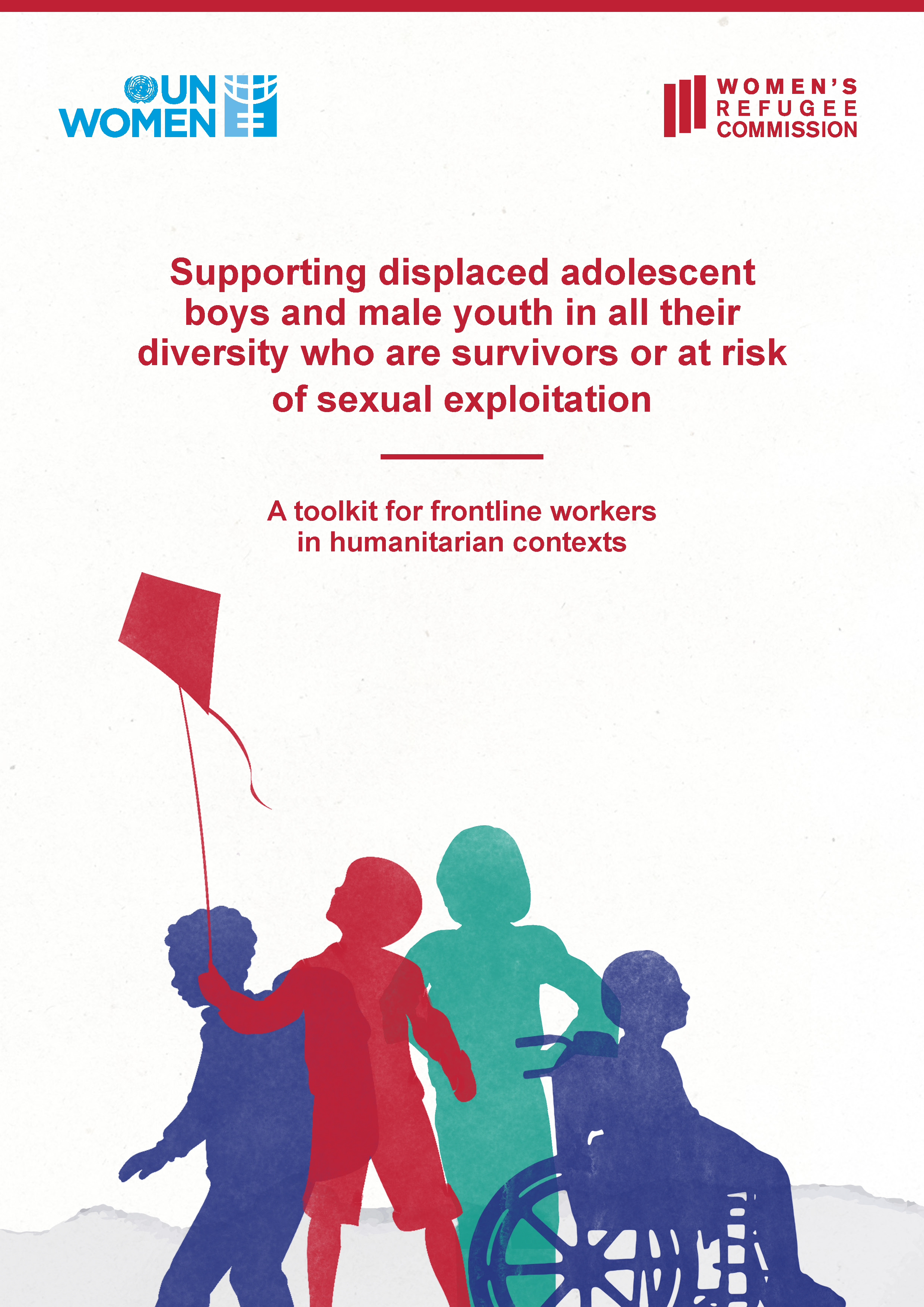 This toolkit developed by WRC with support from UN Women is a comprehensive resource to enhance the capacity of frontline workers to integrate protection and support for adolescent boys and male youth, including LGBTQI+ individuals, into protection programs.
This toolkit developed by WRC with support from UN Women is a comprehensive resource to enhance the capacity of frontline workers to integrate protection and support for adolescent boys and male youth, including LGBTQI+ individuals, into protection programs.
Delivering Peer Support Groups To Adolescent Boy and Male Youth Survivors of Sexual Violence, Including LGBTQI+ Youth, In Humanitarian Contexts
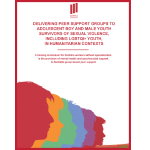 WRC developed a two-part training curriculum in 2024 for frontline workers without specialization in the provision of mental health and psychosocial support, to facilitate group-based peer support.
WRC developed a two-part training curriculum in 2024 for frontline workers without specialization in the provision of mental health and psychosocial support, to facilitate group-based peer support.
The training curriculum is in two parts:
Feminist Approach
WRC’s work on sexual violence against men and boys strives to prioritize accountability to women and girls. We do this by:
- exploring how sexual violence against men and boys impacts the lives of women and girls;
- exploring how sexual violence against men and boys intersects with violence against women and girls;
- advocating for services for and attention to all survivors, including LGBTQI+ individuals;
- dispelling the myth that services and treatment are available for sexual violence survivors who identify as women and girls, but not for men and boys—services and treatment are typically limited for all survivors;
- collaborating with feminist organizations, including LGBTQI+ civil society organizations; and
- including experts on violence against women and girls on our Global Advisory Committee.
Sexual Violence Project
Strengthening Sexual Violence Prevention and Response for Crisis-Affected Adolescent Boys and Male Youth
In 2018, WRC launched its Sexual Violence Project, a multi-year initiative to document the diverse characteristics, scope, and consequences of sexual violence against people in humanitarian crises who identified as male or were designated as male at birth, including LGBTQI+ individuals. The impact of how women and girls are impacted by sexual violence against men and boys was also examined. The project continues to generate and leverage evidence to develop field-friendly tools and guidance to strengthen prevention strategies and response approaches to meet the needs of crisis-affected survivors of sexual violence and those at risk.
In Phase 1 (2018–2021) of the project, we conducted research in three refugee settings: the Rohingya refugee community in Cox’s Bazar, Bangladesh; among refugees and migrants traveling the Central Mediterranean route through Libya to Italy; and among refugees in Nairobi and Mombasa, Kenya. We also piloted community-based projects to facilitate service uptake, coordinated the first inter-agency working group on sexual violence against men and boys, and developed field-friendly tools and guidance.
Phase 2 (2021-2024) seeks to both leverage Phase 1 learnings and focus further on the unique risks of sexual violence that adolescent boys (10-19 years) and male youth (10-24 years), including those with diverse SOCIESC, face as a result of conflict and displacement. Alongside project collaborators, WRC is working to build humanitarian practitioner capacity, catalyze tool uptake, raise awareness, and expand service provision to more appropriately meet the needs of adolescent boy and male youth survivors of sexual violence and those at risk.
Resources
Under the Sexual Violence Project, WRC has conducted qualitative, exploratory studies to both better understand the nature, characteristics, and impacts of sexual violence against displaced men and boys, including LGBTQI+ individuals, and to help humanitarian agencies improve protection mechanisms and strengthen services for survivors. Intersections with violence against women and girls have also been explored.
Service Barriers Faced by Male Survivors of Sexual Violence in Ukraine
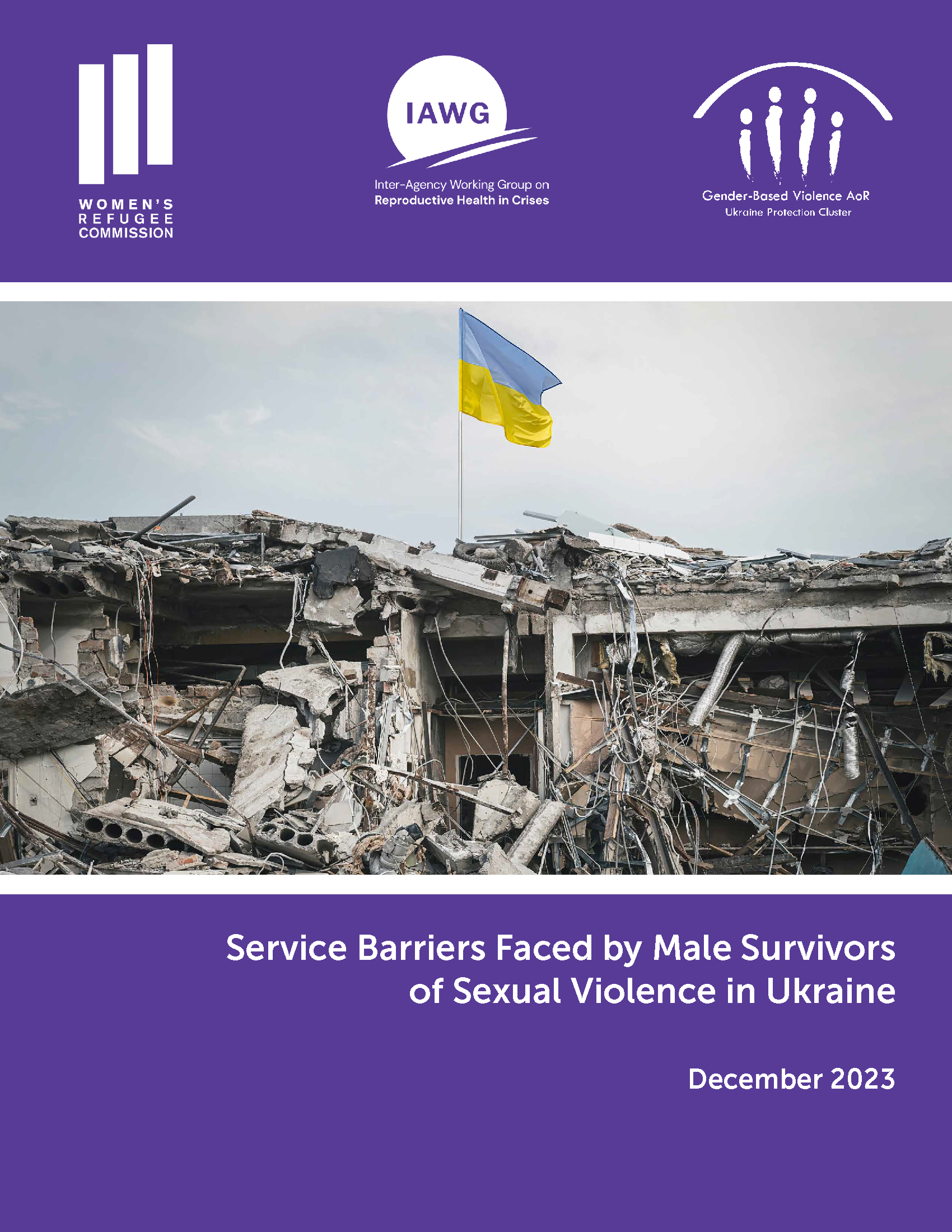
This report documents findings and key recommendations from a rapid assessment of barriers faced by male survivors of sexual violence in Ukraine and key entry points of disclosure.
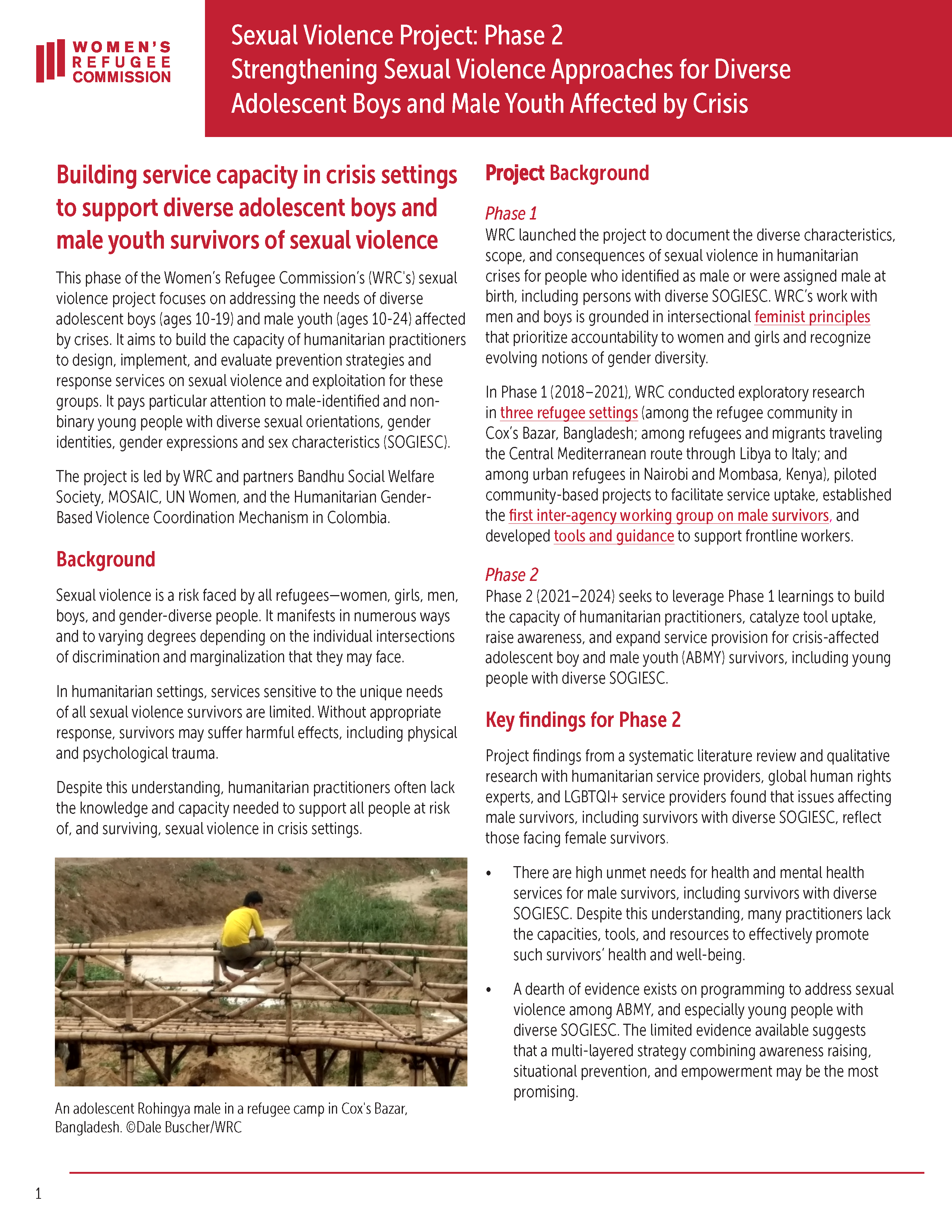
This project snapshot shares research findings, implications for humanitarian practitioners and policymakers, and expected outcomes for WRC’s efforts to strengthen humanitarian practitioners’ capacity to prevent and respond to sexual violence.
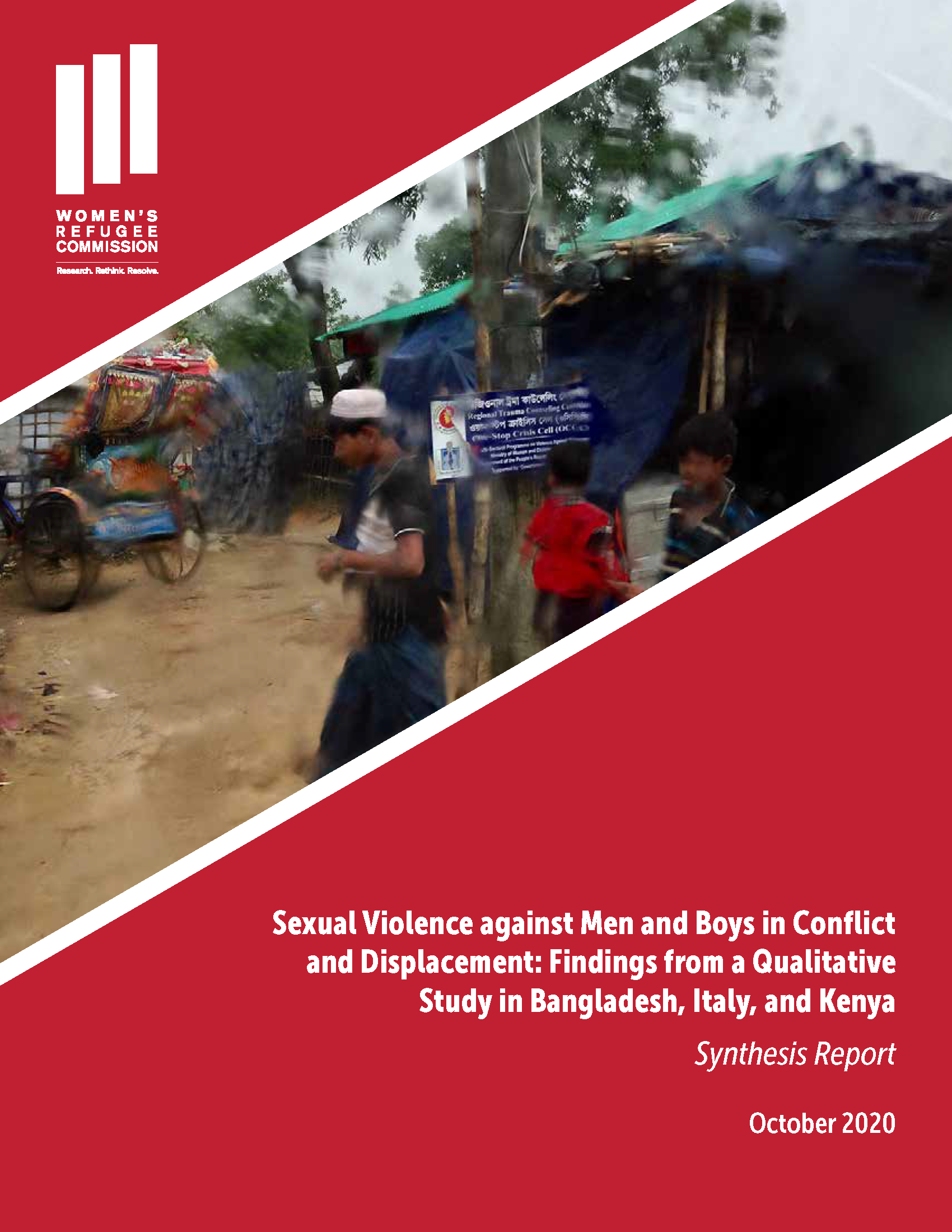 The Women’s Refugee Commission undertook exploratory, qualitative research examining the characteristics and impacts of sexual violence against men and boys.
The Women’s Refugee Commission undertook exploratory, qualitative research examining the characteristics and impacts of sexual violence against men and boys.
“We Have a Broken Heart”: Sexual Violence against Refugees in Nairobi and Mombasa, Kenya. The Experiences of Congolese, Somali, and South Sudanese Men, Boys, and Trans Women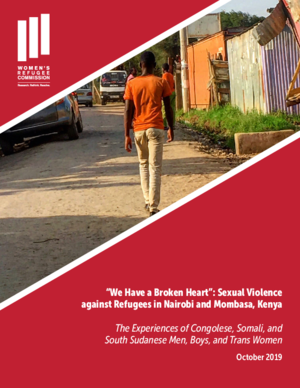
In April and May 2019, WRC traveled to Kenya to explore sexual violence perpetrated against Congolese, Somali, and South Sudanese refugee men and boys, including those with diverse sexual orientation, gender identities, and gender expressions, and trans women in their home countries, during flight, and in Nairobi and Mombasa.
10 Insights from Discussions with Boys and Young Men Traveling to Italy on Sexual Violence
This booklet was developed in collaboration with UNICEF.
In October 2018, WRC undertook fieldwork in Rome and Sicily to explore sexual violence perpetrated against refugee and migrant men and boys traveling the central Mediterranean route to Italy.
It’s Happening to Our Men as Well: Sexual Violence against Rohingya Men and Boys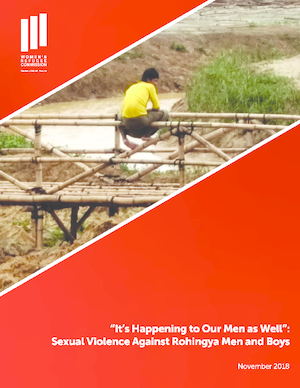
In July 2018, WRC traveled to Cox’s Bazar, Bangladesh, to explore sexual violence perpetrated against Rohingya men and boys in Myanmar and Bangladesh.
Articles
This article appeared in the Journal of Humanitarian Affairs.
This article appeared in Journal of Interpersonal Violence.
This article appeared in Conflict and Health.
Ethics and Accountability in Researching Sexual Violence against Men and Boys
This article appeared in Forced Migration Review.
Tools and Guidance
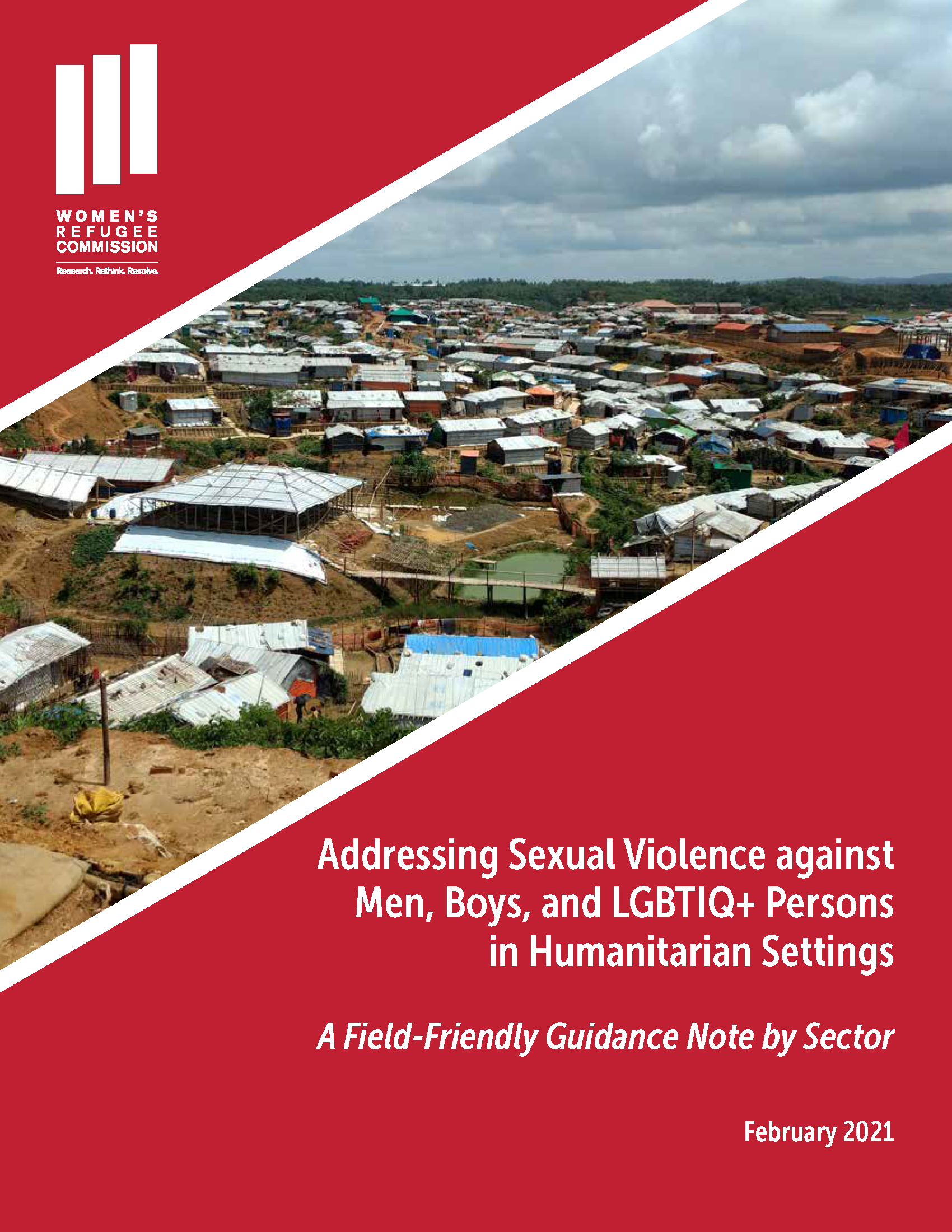 The Women’s Refugee Commission developed this Guidance Note in response to unmet needs found among men, boy, and LGBTIQ+ survivors of sexual violence in three refugee settings.
The Women’s Refugee Commission developed this Guidance Note in response to unmet needs found among men, boy, and LGBTIQ+ survivors of sexual violence in three refugee settings.
Supporting Young Male Refugees and Migrants Who are Survivors or at Risk of Sexual Violence: A Field Guide for Frontline Workers in Europe
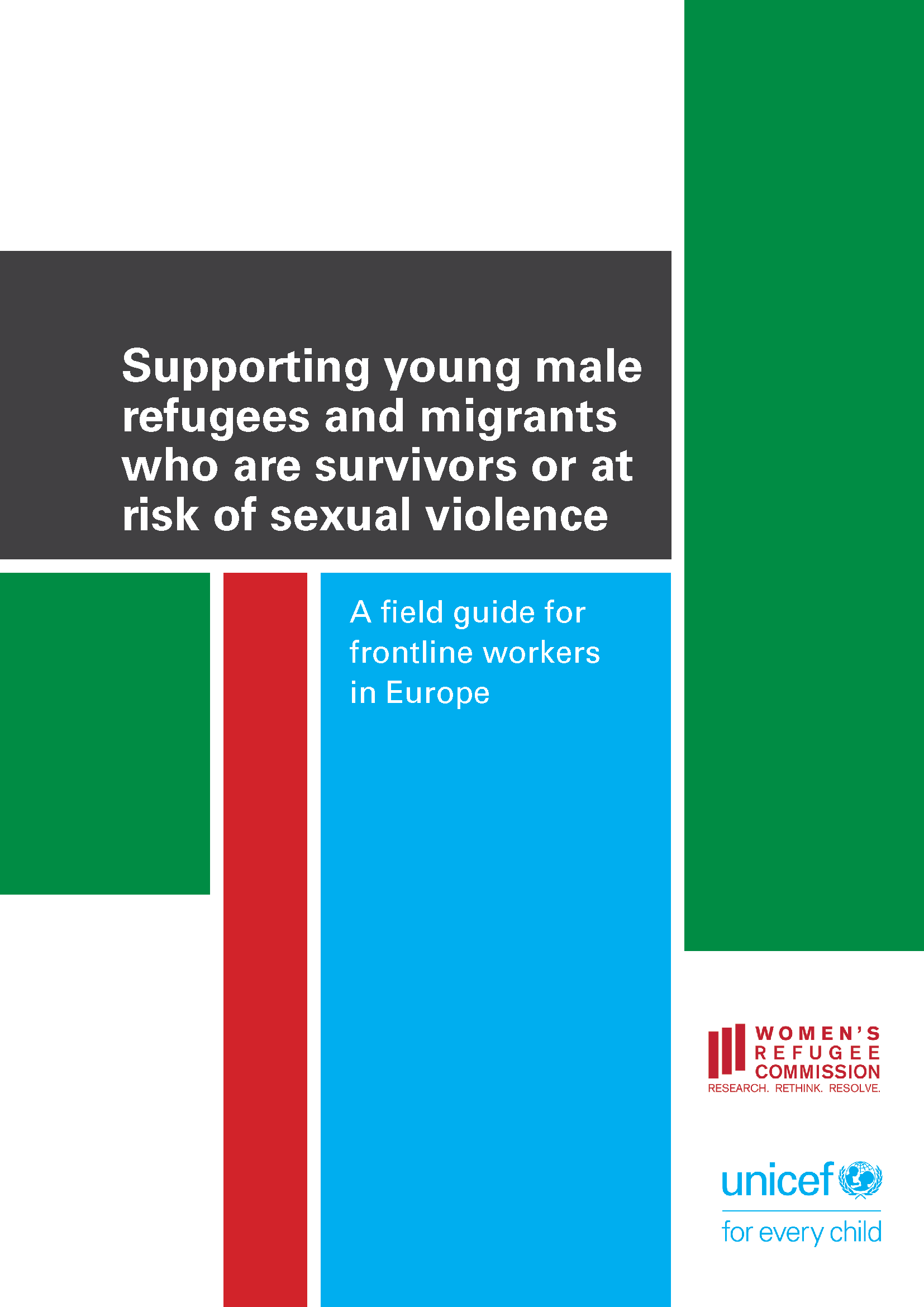 This field guide, prepared by UNICEF and WRC’s Sexual Violence Project, provides tips on how to engage with and support young male refugees and migrants in Europe who are survivors of or at risk of sexual violence.
This field guide, prepared by UNICEF and WRC’s Sexual Violence Project, provides tips on how to engage with and support young male refugees and migrants in Europe who are survivors of or at risk of sexual violence.
Supporting Survivors of Violence: The Role of Linguistic and Cultural Mediators – With a Focus on Gender-Based Violence and Sexual Violence against Men and Boys. A Training Curriculum
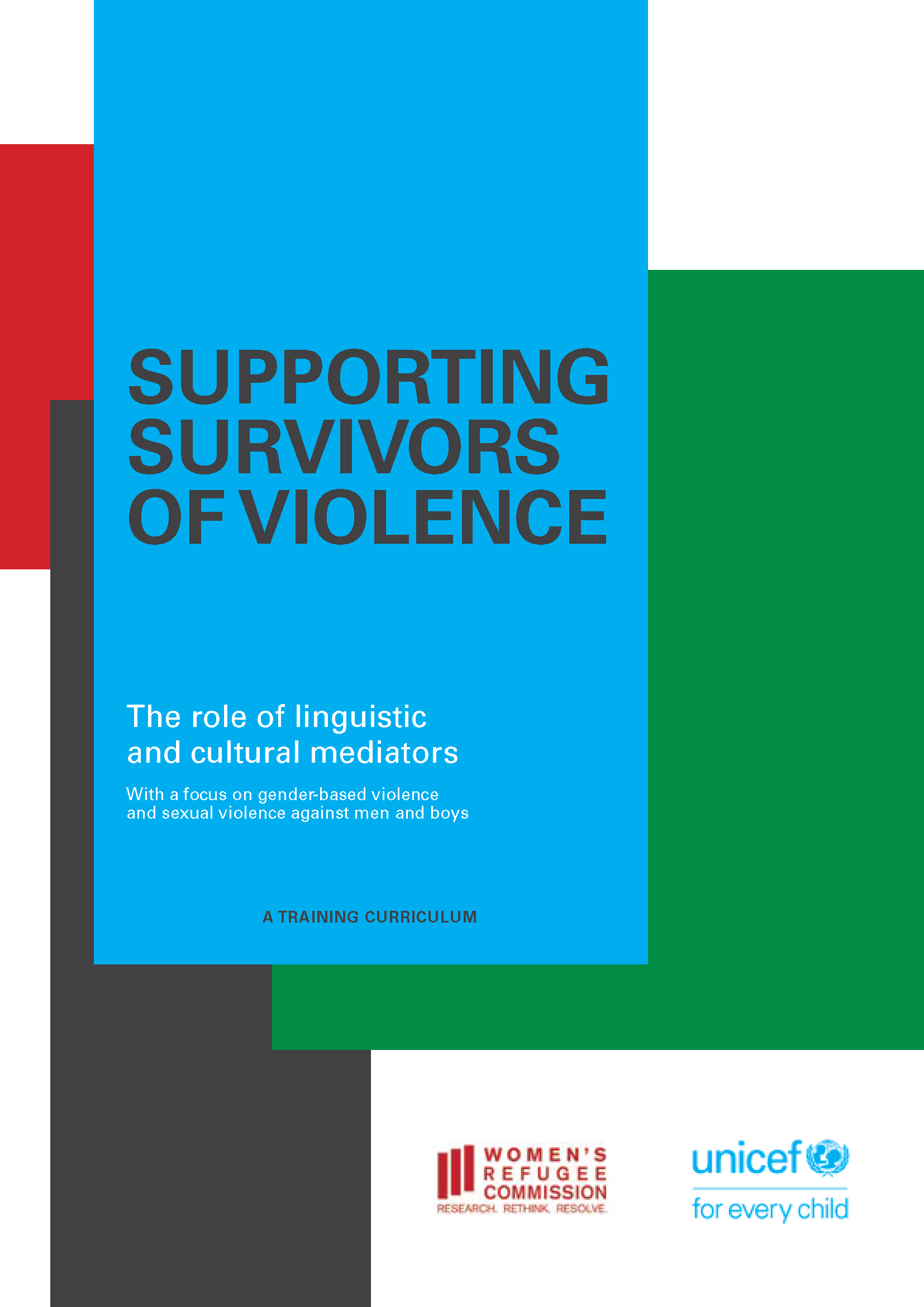 The Women’s Refugee Commission and UNICEF developed this training curriculum, which aims to equip linguistic and cultural mediators with the foundational knowledge they need to respond effectively to and support survivors of gender-based violence and sexual violence, including male survivors.
The Women’s Refugee Commission and UNICEF developed this training curriculum, which aims to equip linguistic and cultural mediators with the foundational knowledge they need to respond effectively to and support survivors of gender-based violence and sexual violence, including male survivors.
>
Pilots
Addressing Sexual Violence against Men, Boys, and LGBTIQ+ Refugees: Learnings from Pilot Projects in Bangladesh, Italy/Bulgaria, and Kenya
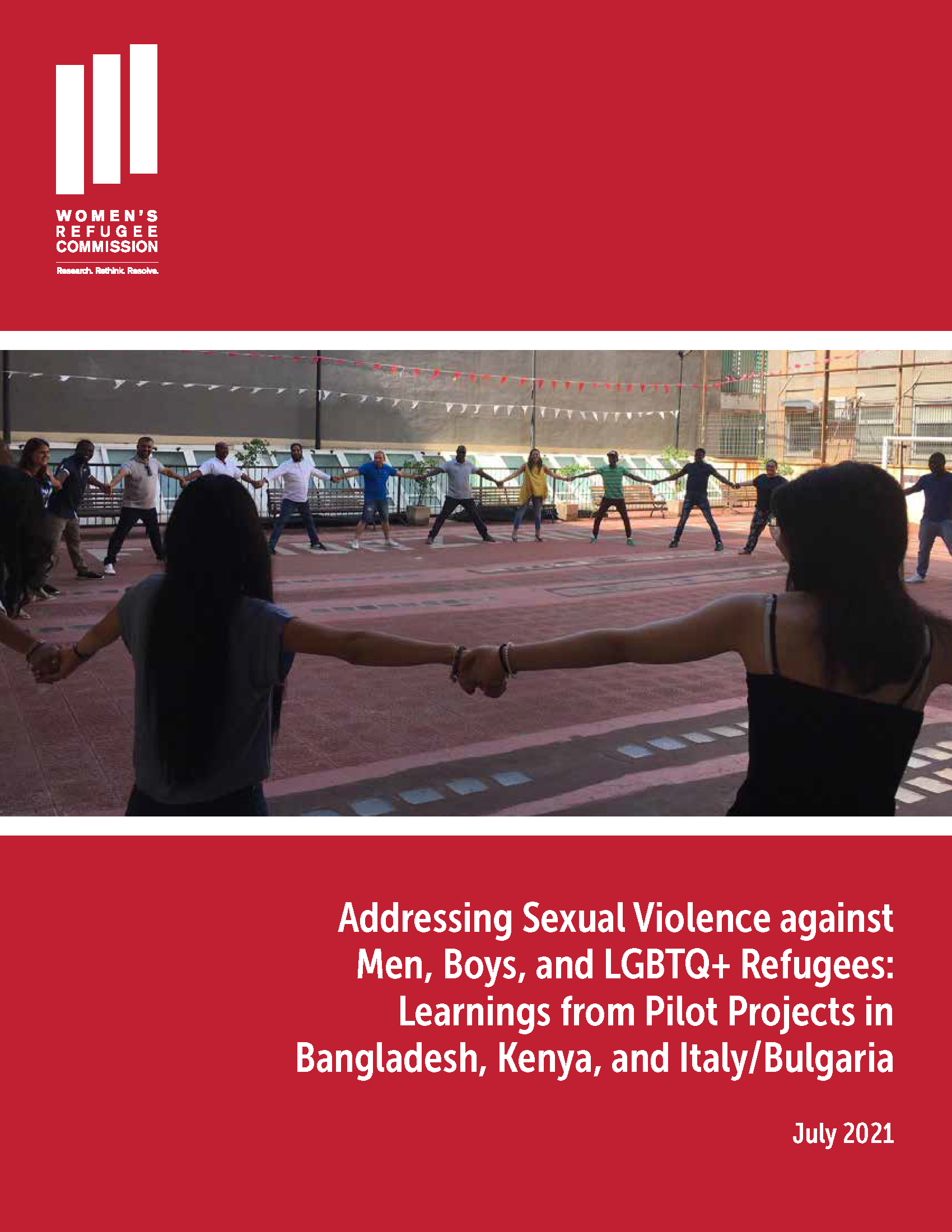 This report presents a synthesis of the key learnings from the pilots and outlines top recommendations. WRC undertook exploratory qualitative research on sexual violence against men and boys (including those with diverse sexual orientations and/or gender identity/expression) in three refugee settings: Bangladesh (Cox’s Bazar), Italy, and urban Kenya.
This report presents a synthesis of the key learnings from the pilots and outlines top recommendations. WRC undertook exploratory qualitative research on sexual violence against men and boys (including those with diverse sexual orientations and/or gender identity/expression) in three refugee settings: Bangladesh (Cox’s Bazar), Italy, and urban Kenya.


